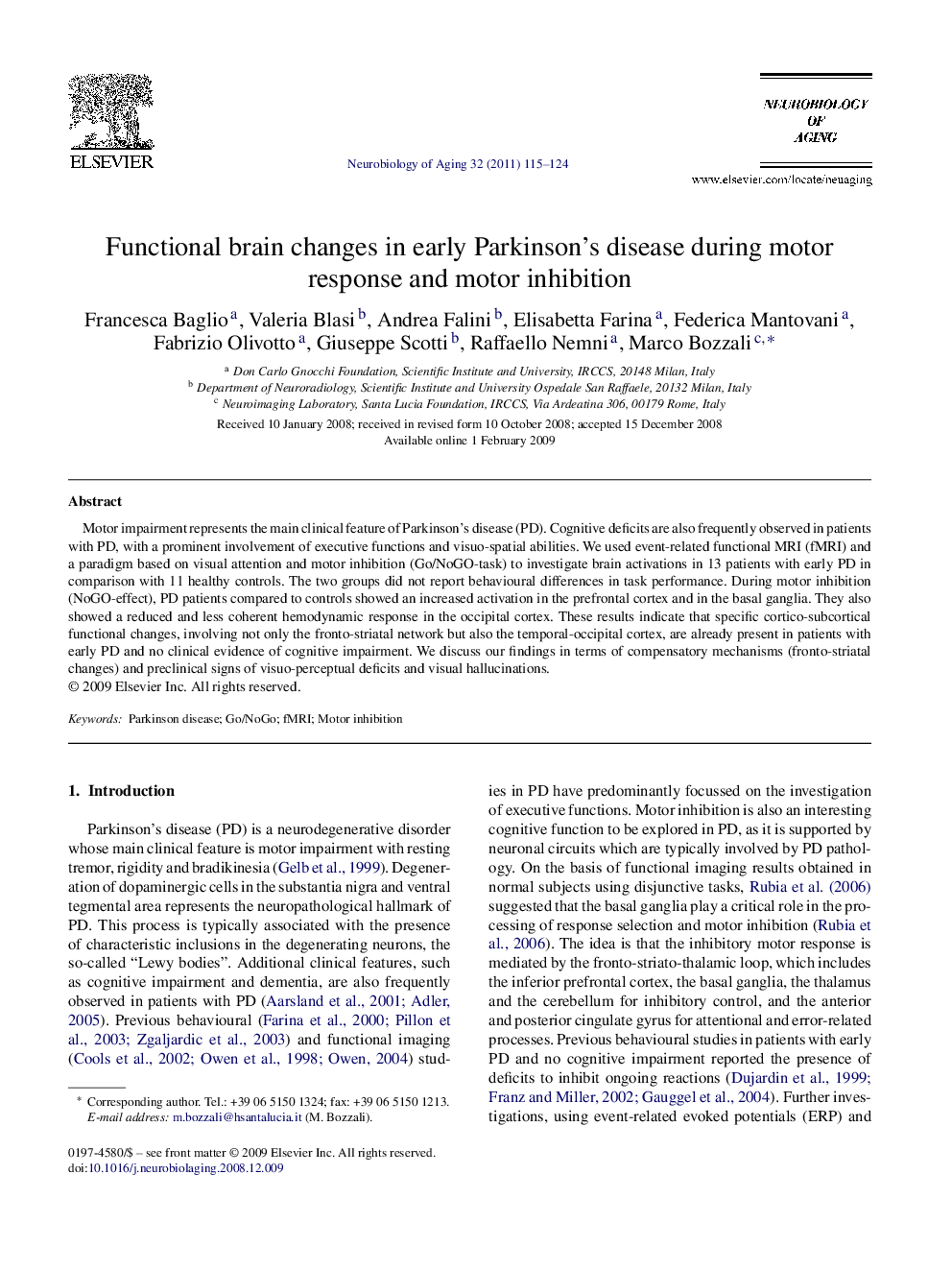| Article ID | Journal | Published Year | Pages | File Type |
|---|---|---|---|---|
| 330197 | Neurobiology of Aging | 2011 | 10 Pages |
Motor impairment represents the main clinical feature of Parkinson's disease (PD). Cognitive deficits are also frequently observed in patients with PD, with a prominent involvement of executive functions and visuo-spatial abilities. We used event-related functional MRI (fMRI) and a paradigm based on visual attention and motor inhibition (Go/NoGO-task) to investigate brain activations in 13 patients with early PD in comparison with 11 healthy controls. The two groups did not report behavioural differences in task performance. During motor inhibition (NoGO-effect), PD patients compared to controls showed an increased activation in the prefrontal cortex and in the basal ganglia. They also showed a reduced and less coherent hemodynamic response in the occipital cortex. These results indicate that specific cortico-subcortical functional changes, involving not only the fronto-striatal network but also the temporal-occipital cortex, are already present in patients with early PD and no clinical evidence of cognitive impairment. We discuss our findings in terms of compensatory mechanisms (fronto-striatal changes) and preclinical signs of visuo-perceptual deficits and visual hallucinations.
